-
Executive Summary
-
Scope of the Report
-
Market Definition
-
Scope of the Study
- Research Objectives
- Assumptions & Limitations
-
Market Structure
-
Market Research
-
Methodology
-
Research Process
-
Secondary Research
-
Primary
-
Research
-
Forecast Model
-
Market Landscape
-
Supply Chain Analysis
- Raw Material Suppliers
- Manufacturers/Producers
- Distributors/Retailers/Wholesalers/E-Commerce
- End-Users
-
Porter’s Five Forces Analysis
- Threat
- Bargaining Power of Buyers
- Bargaining Power
- Threat of Substitutes
- Intensity of Competitive
-
of New Entrants
-
of Suppliers
-
Rivalry
-
Market Dynamics of Global Construction Fabrics Market
-
Introduction
-
Drivers
-
Restraints
-
Opportunities
-
Challenges
-
Trends/Strategies
-
Global Construction Fabrics Market, by Type
-
Introduction
-
Needle Punched Nonwoven
- Market Estimates &
- Market Estimates & Forecast, by Region,
-
Forecast, 2022–2030
-
Woven Monofilament
- Market Estimates & Forecast,
- Market Estimates & Forecast, by Region, 2022–2030
-
Woven Slit
- Market Estimates & Forecast, 2022–2030
- Market Estimates & Forecast, by Region, 2022–2030
-
Global
-
Construction Fabrics Market, by Materials
-
Introduction
-
PVC
- Market Estimates & Forecast, 2022–2030
- Market Estimates
-
& Forecast, by Region, 2022–2030
-
PE
- Market Estimates
- Market Estimates & Forecast, by Region,
-
& Forecast, 2022–2030
-
PP
- Market Estimates & Forecast, 2022–2030
- Market Estimates & Forecast, by Region, 2022–2030
-
PTFE
- Market Estimates & Forecast, 2022–2030
- Market Estimates
-
& Forecast, by Region, 2022–2030
-
ETFE
- Market Estimates
- Market Estimates & Forecast, by Region,
-
& Forecast, 2022–2030
-
Others
- Market Estimates & Forecast, 2022–2030
- Market Estimates & Forecast, by Region, 2022–2030
-
Global
-
Construction Fabrics Market, by Application
-
Introduction
-
Tensile
- Market Estimates & Forecast, 2022–2030
-
Architecture
-
Market Estimates & Forecast, by Region, 2022–2030
-
Awnings &
- Market Estimates & Forecast, 2022–2030
-
Canopies
-
Market Estimates & Forecast, by Region, 2022–2030
-
Hoardings &
- Market Estimates & Forecast, 2022–2030
-
Signages
-
Market Estimates & Forecast, by Region, 2022–2030
-
Scaffolding
- Market Estimates & Forecast, 2022–2030
- Market
-
Nets
-
Estimates & Forecast, by Region, 2022–2030
-
Facades
- Market Estimates &
-
Market Estimates & Forecast, 2022–2030
-
Forecast, by Region, 2022–2030
-
Global Construction Fabrics Market,
-
by Region
-
Introduction
-
North America
- Market Estimates
- Market Estimates & Forecast, by Type,
- Market Estimates & Forecast, by Materials, 2022–2030
- Market Estimates & Forecast, by Application, 2022–2030
- Canada
-
& Forecast, 2022–2030
-
US
-
Estimates & Forecast, by Type, 2022–2030
-
& Forecast, by Materials, 2022–2030
-
Forecast, by Application, 2022–2030
-
Estimates & Forecast, 2022–2030
-
by Type, 2022–2030
-
Europe
- Market Estimates & Forecast, 2022–2030
-
Market Estimates & Forecast, by Type, 2022–2030
-
& Forecast, by Materials, 2022–2030
-
Forecast, by Application, 2022–2030
-
Estimates & Forecast, 2022–2030
-
by Type, 2022–2030
-
Market Estimates
-
Market Estimates &
-
Germany
-
Market
-
Market Estimates & Forecast,
-
Market Estimates & Forecast, by Materials,
-
Market Estimates & Forecast, by Application, 2022–2030
-
France
-
Market Estimates & Forecast, 2022–2030
-
Market Estimates & Forecast, by Type, 2022–2030
-
Market Estimates & Forecast, by Materials, 2022–2030
-
Estimates & Forecast, by Application, 2022–2030
-
Market Estimates & Forecast, 2022–2030
-
Forecast, by Type, 2022–2030
-
by Materials, 2022–2030
-
Market
-
Italy
-
Market Estimates &
-
Market Estimates & Forecast,
-
Market Estimates & Forecast, by Application,
-
Spain
-
Market Estimates & Forecast, 2022–2030
-
Market Estimates & Forecast, by Type, 2022–2030
-
Market Estimates & Forecast, by Materials, 2022–2030
-
Estimates & Forecast, by Application, 2022–2030
-
Market Estimates & Forecast, 2022–2030
-
Forecast, by Type, 2022–2030
-
by Materials, 2022–2030
-
Market
-
UK
-
Market Estimates &
-
Market Estimates & Forecast,
-
Market Estimates & Forecast, by Application,
-
Russia
-
Market Estimates & Forecast,
-
Market Estimates & Forecast, by Type, 2022–2030
-
Market Estimates & Forecast, by Materials, 2022–2030
-
Market Estimates & Forecast, by Application, 2022–2030
-
Estimates & Forecast, by Type, 2022–2030
-
& Forecast, by Materials, 2022–2030
-
Forecast, by Application, 2022–2030
-
Market Estimates & Forecast, 2022–2030
-
& Forecast, by Type, 2022–2030
-
by Materials, 2022–2030
-
Application, 2022–2030
-
Forecast, 2022–2030
-
Poland
-
Market Estimates & Forecast, 2022–2030
-
Market
-
Market Estimates
-
Market Estimates &
-
Rest of Europe
-
Market Estimates
-
Market Estimates & Forecast,
-
Market Estimates & Forecast, by
-
Asia-Pacific
- Market Estimates &
- Market Estimates & Forecast, by Type, 2022–2030
- Market Estimates & Forecast, by Materials, 2022–2030
-
Market Estimates & Forecast, by Application, 2022–2030
-
& Forecast, by Type, 2022–2030
-
by Materials, 2022–2030
-
China
-
Market Estimates & Forecast, 2022–2030
-
Market Estimates
-
Market Estimates & Forecast,
-
Market Estimates & Forecast, by Application,
-
India
-
Market Estimates & Forecast, 2022–2030
-
Market Estimates & Forecast, by Type, 2022–2030
-
Market Estimates & Forecast, by Materials, 2022–2030
-
Estimates & Forecast, by Application, 2022–2030
-
Market Estimates & Forecast, 2022–2030
-
Forecast, by Type, 2022–2030
-
by Materials, 2022–2030
-
& Forecast, 2022–2030
-
Type, 2022–2030
-
Market
-
Japan
-
Market Estimates &
-
Market Estimates & Forecast,
-
Market Estimates & Forecast, by Application,
-
Australia & New Zealand
-
Market Estimates
-
Market Estimates & Forecast, by
-
Market Estimates & Forecast, by Materials,
-
Market Estimates & Forecast, by Application, 2022–2030
-
Indonesia & South Korea
-
Market Estimates & Forecast,
-
Market Estimates & Forecast, by Type, 2022–2030
-
Market Estimates & Forecast, by Materials, 2022–2030
-
Market Estimates & Forecast, by Application, 2022–2030
-
of Asia-Pacific
-
Rest
-
Market Estimates & Forecast, 2022–2030
-
Market Estimates & Forecast, by Type, 2022–2030
-
Market Estimates & Forecast, by Materials, 2022–2030
-
Estimates & Forecast, by Application, 2022–2030
-
Africa
-
Estimates & Forecast, by Type, 2022–2030
-
Forecast, by Materials, 2022–2030
-
by Application, 2022–2030
-
Forecast, 2022–2030
-
Israel
-
Market
-
Middle East &
- Market Estimates & Forecast, 2022–2030
- Market
- Market Estimates &
- Market Estimates & Forecast,
- GCC
-
Market Estimates & Forecast, by Type, 2022–2030
-
& Forecast, by Materials, 2022–2030
-
Forecast, by Application, 2022–2030
-
Estimates & Forecast, 2022–2030
-
by Type, 2022–2030
-
Market Estimates
-
Market Estimates &
-
North Africa
-
Market
-
Market Estimates & Forecast,
-
Market Estimates & Forecast, by Materials,
-
Market Estimates & Forecast, by Application, 2022–2030
-
Turkey
-
Market Estimates & Forecast, 2022–2030
-
Market Estimates & Forecast, by Type, 2022–2030
-
Market Estimates & Forecast, by Materials, 2022–2030
-
Estimates & Forecast, by Application, 2022–2030
-
Middle East & Africa
-
Market
-
Rest of the
-
Market Estimates & Forecast, 2022–2030
-
Market Estimates & Forecast, by Type, 2022–2030
-
Market Estimates & Forecast, by Materials, 2022–2030
-
Estimates & Forecast, by Application, 2022–2030
-
& Forecast, by Type, 2022–2030
-
by Materials, 2022–2030
-
Market
-
Latin America
- Market Estimates & Forecast, 2022–2030
- Market Estimates
- Market Estimates & Forecast,
- Market Estimates & Forecast, by Application,
- Brazil
-
Market Estimates & Forecast, by Application, 2022–2030
-
& Forecast, by Type, 2022–2030
-
by Materials, 2022–2030
-
Mexico
-
Market Estimates & Forecast, 2022–2030
-
Market Estimates
-
Market Estimates & Forecast,
-
Market Estimates & Forecast, by Application,
-
Argentina
-
Market Estimates & Forecast,
-
Market Estimates & Forecast, by Type, 2022–2030
-
Market Estimates & Forecast, by Materials, 2022–2030
-
Market Estimates & Forecast, by Application, 2022–2030
-
of Latin America
-
Rest
-
Market Estimates & Forecast, 2022–2030
-
Market Estimates & Forecast, by Type, 2022–2030
-
Market Estimates & Forecast, by Materials, 2022–2030
-
Estimates & Forecast, by Application, 2022–2030
-
Market
-
Company Landscape
-
Introduction
-
Market Strategy
-
Key Development Analysis
-
(Expansions/Mergers & Acquisitions/Joint Ventures/New Materials Developments/Agreements/Investments)
-
Company Profiles
-
Saint-Gobain
- Company Overview
- Materials/Business Segment Overview
- Strategy
- Key Developments
- SWOT Analysis
-
Financial Updates
-
Sioen Industries NV
- Company Overview
- Financial Updates
- Materials/Business
- Strategy
- Key Developments
- SWOT
-
Segment Overview
-
Analysis
-
Low & Bonar
- Company Overview
- Financial
- Materials/Business Segment Overview
- Strategy
- Key Developments
- SWOT Analysis
-
Updates
-
Sattler AG
- Financial Updates
- Materials/Business Segment
- Strategy
- Key Developments
- SWOT Analysis
-
Company Overview
-
Overview
-
Koninklijke Ten Cate bv
- Company Overview
- Financial
- Materials/Business Segment Overview
- Strategy
- Key Developments
- SWOT Analysis
-
Updates
-
Fibertex Nonwovens
- Company Overview
- Financial Updates
- Materials/Business
- Strategy
- Key Developments
- SWOT
-
A/S
-
Segment Overview
-
Analysis
-
Serge Ferrari
- Company Overview
- Financial
- Materials/Business Segment Overview
- Strategy
- Key Developments
- SWOT Analysis
-
Updates
-
HIRAOKA & CO.,
- Company Overview
- Financial Updates
- Materials/Business
- Strategy
- Key Developments
- SWOT
-
LTD.
-
Segment Overview
-
Analysis
-
ENDUTEX COATED TECHNICAL TEXTILES
- Company Overview
- Financial Updates
- Materials/Business Segment Overview
- Key Developments
- SWOT Analysis
-
Strategy
-
Seaman
- Company Overview
- Financial Updates
- Strategy
- Key Developments
- SWOT Analysis
-
Corporation
-
Materials/Business Segment Overview
-
Stylepark AG
- Company Overview
- Financial Updates
- Materials/Business Segment Overview
- Strategy
- Key Developments
- SWOT Analysis
- Company Overview
- Financial Updates
- Strategy
- Key Developments
- SWOT Analysis
-
seele
-
Materials/Business Segment Overview
-
Conclusion
-
LIST OF TABLES
-
Table
-
Global Construction Fabrics Market, by Region, 2022–2030
-
North
-
America: Construction Fabrics Market, by Country, 2022–2030
-
Europe:
-
Construction Fabrics Market, by Country, 2022–2030
-
Asia-Pacific:
-
Construction Fabrics Market, by Country, 2022–2030
-
Middle East
-
& Africa: Construction Fabrics Market, by Country, 2022–2030
-
Table
-
Latin America: Construction Fabrics Market, by Country, 2022–2030
-
Table
-
Global Construction Fabrics Type Market, by Region, 2022–2030
-
Table
-
North America: Construction Fabrics Type Market, by Country, 2022–2030
-
Europe: Construction Fabrics Type Market, by Country, 2022–2030
-
Table10 Asia-Pacific: Construction Fabrics Type Market, by Country, 2022–2030
-
Table11 Middle East & Africa: Construction Fabrics Type Market, by Country,
-
Table12 Latin America: Construction Fabrics Type Market, by
-
Country, 2022–2030
-
Table13 Global Construction Fabrics Materials Market,
-
by Region, 2022–2030
-
Table14 North America: Construction Fabrics Materials
-
Market, by Country, 2022–2030
-
Table15 Europe: Construction Fabrics Materials
-
Market, by Country, 2022–2030
-
Table16 Asia-Pacific: Construction Fabrics
-
Materials Market, by Country, 2022–2030
-
Table17 Middle East & Africa:
-
Construction Fabrics Materials Market, by Country, 2022–2030
-
Table18
-
Latin America: Construction Fabrics Materials Market, by Country, 2022–2030
-
Table19 Global Construction Fabrics Application Market, by Region, 2022–2030
-
Table20 North America: Construction Fabrics Application Market, by Country, 2022–2030
-
Table21 Europe: Construction Fabrics Application Market, by Country, 2022–2030
-
Table22 Asia-Pacific: Construction Fabrics Application Market, by Country, 2022–2030
-
Table23 Middle East & Africa: Construction Fabrics Application Market, by
-
Country, 2022–2030
-
Table24 Latin America: Construction Fabrics Application
-
Market, by Country, 2022–2030
-
Table25 Global Type Market, by Region,
-
Table26 Global Materials Market, by Region, 2022–2030
-
Table27 Global Application Market, by Region, 2022–2030
-
Table28 North
-
America: Construction Fabrics Market, by Country
-
Table29 North America: Construction
-
Fabrics Market, by Type
-
Table30 North America: Construction Fabrics Market,
-
by Materials
-
Table31 North America: Construction Fabrics Market, by Application
-
Table32 Europe: Construction Fabrics Market, by Country
-
Table33 Europe: Construction
-
Fabrics Market, by Type
-
Table34 Europe: Construction Fabrics Market, by Materials
-
Table35 Europe: Construction Fabrics Market, by Application
-
Table36 Asia-Pacific:
-
Construction Fabrics Market, by Country
-
Table37 Asia-Pacific: Construction
-
Fabrics Market, by Type
-
Table38 Asia-Pacific: Construction Fabrics Market,
-
by Materials
-
Table39 Asia-Pacific: Construction Fabrics Market, by Application
-
Table40 Middle East & Africa: Construction Fabrics Market, by Country
-
Table41
-
Middle East & Africa Construction Fabrics Market, by Type
-
Table42 Middle
-
East & Africa Construction Fabrics Market, by Materials
-
Table43 Middle
-
East & Africa: Construction Fabrics Market, by Application
-
Table44 Latin
-
America: Construction Fabrics Market, by Country
-
Table45 Latin America Construction
-
Fabrics Market, by Type
-
Table46 Latin America Construction Fabrics Market,
-
by Materials
-
Table47 Latin America: Construction Fabrics Market, by Application
-
LIST OF FIGURES
-
Global Construction Fabrics Market Segmentation
-
Forecast Research Methodology
-
Porter’s Five Forces
-
Analysis of Global Construction Fabrics Market
-
Value Chain of Global
-
Construction Fabrics Market
-
Share of Global Construction Fabrics Market
-
in 2022, by Country (%)
-
Global Construction Fabrics Market, 2022–2030,
-
Global Construction Fabrics Market Size by Types, 2022
-
FIGURE 8
-
Share of Global Construction Fabrics Market, by Type, 2022–2030
-
FIGURE
-
Global Construction Fabrics Market Size, by Materials, 2022
-
Share
-
of Global Construction Fabrics Market, by Materials, 2022–2030
-
FIGURE
-
Global Construction Fabrics Market Size, by Application, 2022
-
FIGURE 12
-
Share of Global Construction Fabrics Market, by Application, 2022–2030

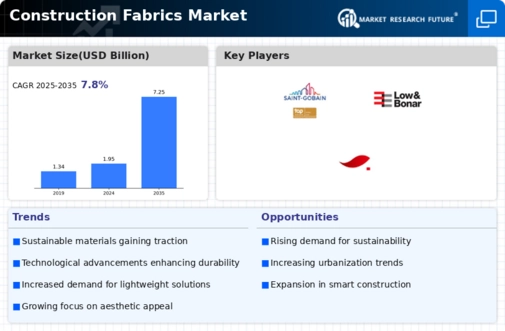
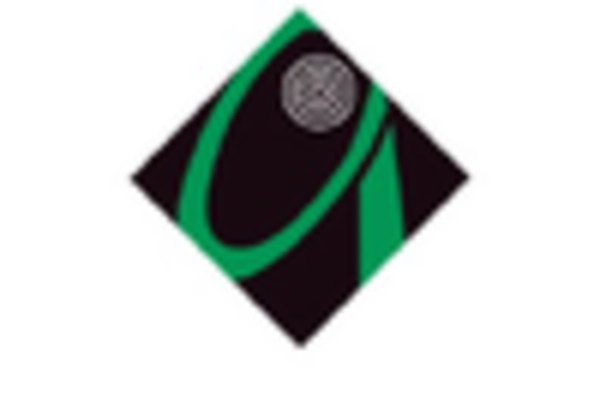
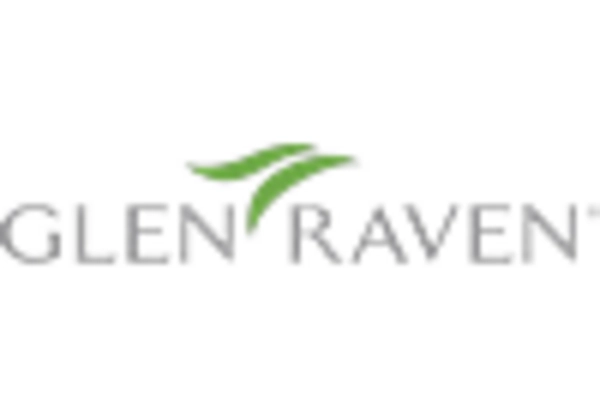
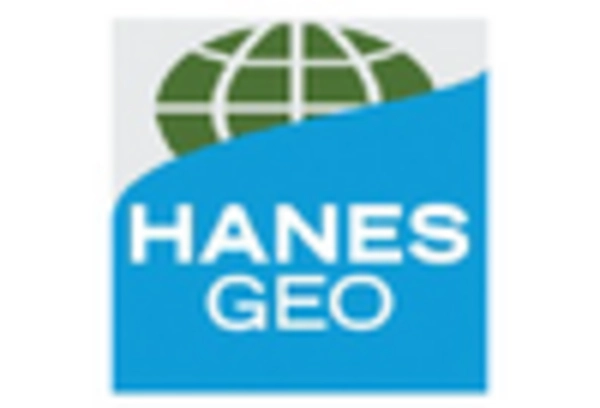
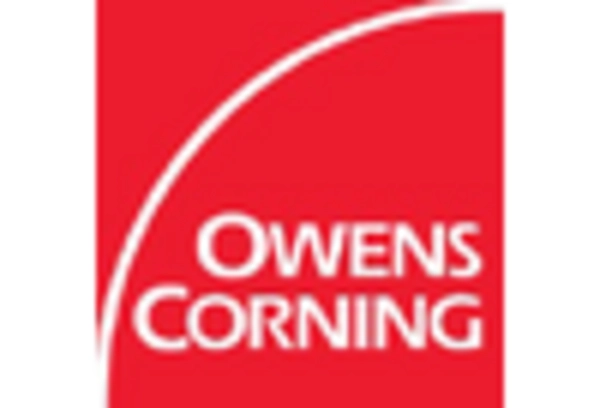

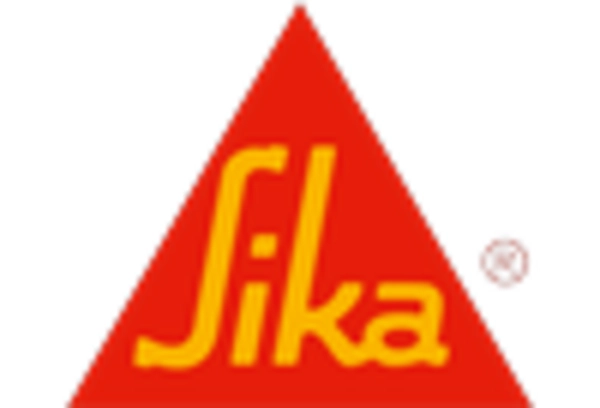









Leave a Comment